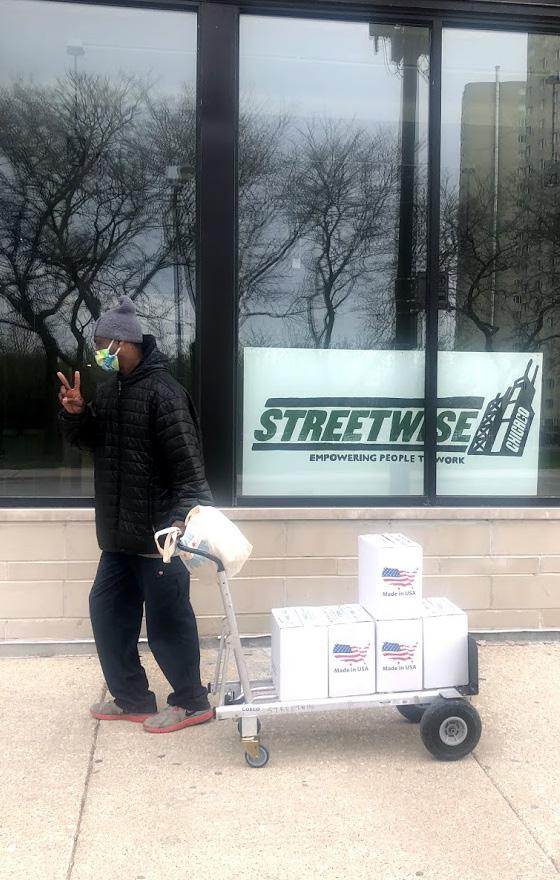“The site that Wrigley finally selected – a trapezoidal lot at the northwest corner of Pine Street and the Chicago River – reflected his astute business sense and a knack for seizing opportunities at the right time,” according to the Chicago Landmarks Commission designation report on the Wrigley Building. Because the site was located at a bend in the Chicago River, a building there would seem to straddle Michigan Avenue and could be seen two miles south down the street. “A building at this site would set the tone of the new and undoubtedly important thoroughfare and would solidify the positive reputation of the Wrigley Building among its customers,” according to the Landmarks Commission. Wrigley engaged the architectural firm of Graham, Anderson, Probst and White, which also produced Chicago landmarks such as the Field Museum of Natural History (1920), Union Station (1913-25), main U.S. Post Office Building (1921, expanded 1932) Pittsfield Building (1927), Civic Opera House (1929) and Merchandise Mart (1930). As the successor to Daniel Burnham’s firm, Graham, Anderson et al was conversant with the historical European and classical Greek and Roman designs of the Beaux Arts style used for the 1893 world’s fair, and the City Beautiful movement. Charles G. Beersman, the architect given the Wrigley commission, had also studied the needs of New York and Chicago real estate.
London Guarantee London Guarantee Building Building
Built on the site of Fort Dearborn on the southwest side of Michigan Avenue and Wacker Drive, the London Guarantee & Accident Building is one of four buildings that have anchored the Michigan Avenue Bridge since the 1920s, with throwback ideas from the World’s Columbian Exhibition of 1893, one of the stars on the Chicago flag. Designed by Alfred S. Alschuler and completed in 1923, the building’s Beaux Arts facade features Corinthian columns and Roman figures, with a cupola atop the 22-story tower. A sculpture of Neptune, the Roman god of the sea, sits above the main entrance, a reference to the maritime insurance sold by the building’s British namesake firm. From the 1950s to the 1970s, the London House on the building’s ground floor was one of the foremost jazz clubs in the U.S., and hosted musicians such as Oscar Peterson, Frank Sinatra, Ramsey Lewis, George Shearing, Barbara Carroll and many others. Meanwhile, the Stone Container Corporation signed a long-term lease in the 1960s, followed years later by Crain Communications. The building was largely empty when Oxford Capital Group acquired it in 2013 and two years later, announced an ambitious restoration project. The 452-room LondonHouse hotel, opened in 2016, takes its name from the mid-century jazz club. It features a 22-story glass addition with ballrooms and meeting spaces designed by Goettsch Partners and a threelevel rooftop lounge.
Beersman structured the building with a three-story entrance, a tall monumental middle zone of uniform floors and a 398foot clock tower modeled after the Spanish Renaissance Giralda Tower of Seville Cathedral–just two feet short of what Chicago then allowed. He chose white terra cotta tiles – lightweight and fireproof – to clad the steel skeleton in a variety of fanciful 16th century French Renaissance, Francis I designs: urns, gryphons, fleur-de-lis, cornucopias and swags. Its total cost came to $8 million, and Wrigley paid in cash, from the financial reserves of the chewing gum company. The Wrigley Building was completely rented by the time it opened on April 1, 1921, and so in August 1922, Wrigley acquired leases on adjoining land for an annex, also designed by Beersman. Wrigley called his decision, “an expression of my personal faith in the future of Chicago. Chicago still lags behind New York in public improvements but I hold out great hope for the future and am staking little money on my belief,” according to the Landmarks Commission. The building did indeed spur development along North Michigan Avenue, but not to the west, as Burnham had envisioned. Construction of the bridge alone had made the land highly desirable for those who wanted lower prices, more light, wide streets and less congestion near the Loop. Speculators bought up warehouses, commercial buildings and surviving residences, and banks went along with them, providing easy terms. www.streetwise.org
11













